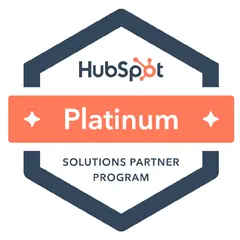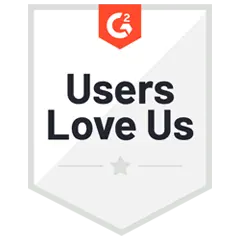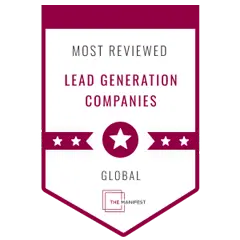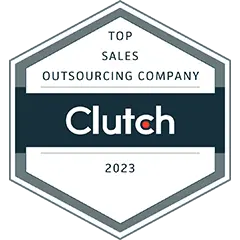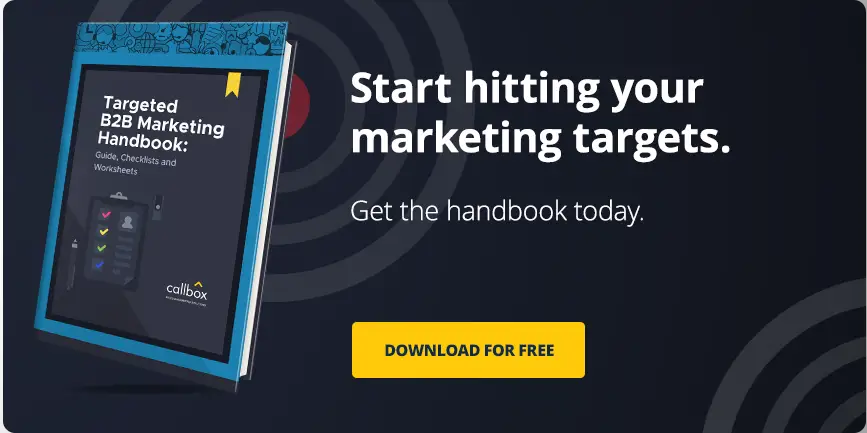Top Solutions To Your Industry-specific SaaS Selling Challenges
SaaS has always been a challenging space to compete in, especially the case with niche industries.
However, there’s no reason for industry-specific SaaS providers not to grow.
There are still many creative ways to overcome these challenges and get ahead of the competition, and this guide will show you how. We’ll look at industry, company, and client issues and give you quick solutions guaranteed to supercharge your efforts.
It’s time to take your lead generation to the next level.
Unqualified Leads
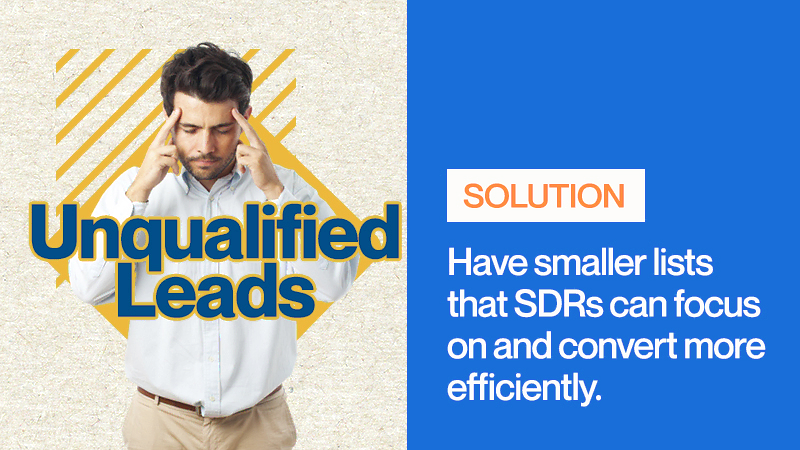
Unqualified leads coming through a lead funnel isn’t new news, it’s common in almost all campaigns, and sometimes it’s unavoidable. However, if the rate of unqualified leads keeps surpassing the ones that can convert, then you have a problem.
Casting a wide net for brand awareness is fine, but applying the same strategy for lead generation isn’t.
The most common cause of unqualified leads is the lack of proper ideal customer profiles (ICPs)
Only after your ICPs are up to can you get your segmentation together. Many marketers often think that an ICP is just basic demographics and characteristics of the ideal buyer, but it goes beyond that.
Good ICPs take into account pain points, challenges, and opportunities; they look at the past behavior of their prospects, and they even check for personality traits. All of these add up to a more holistic view of whom they are really targeting and how they should segment.
Here’s the thing, it doesn’t matter if you get fewer leads when you start segmenting because it means becoming more efficient with your lead generation. You don’t want large lists that don’t convert; that translates to wasted resources. It’s better to have smaller lists that SDRs can focus on and convert more efficiently.
Lastly, you have to take a look at your lead qualification framework. It’s easy to fall down the rabbit hole of different terms like BANT, FAINT, MEDDIC, ANUM, etc., and debate on the differences, but what will matter the most is how it applies to your industry-specific SaaS.
Smaller Markets

Small market shares have always been a pain point for many industry-specific SaaS companies, and that’s necessarily a bad thing at the beginning. It allows for far more specific targeting, and there are still plenty of ways to compete.
A common strategy to employ when using a small market is account-based marketing or ABM; companies can slowly grow even in highly competitive and cramped markets by hyper-personalizing your system.
On the other hand, industry-specific B2B niches can access other markets through geographical expansion; if they play their cards right, there are other markets to tap.
Another venue to expand market share is a product development and the expansion to other similar industries. We’ve seen this happen with many B2B providers that have started with their core competency and started expanding to include complementary services in the product portfolio.
A small market share is never an excuse for companies who are chasing growth; there are a lot of ways to expand. Companies should audit their existing sales and marketing campaigns because that, too, can be a culprit.
Long Sales Cycles
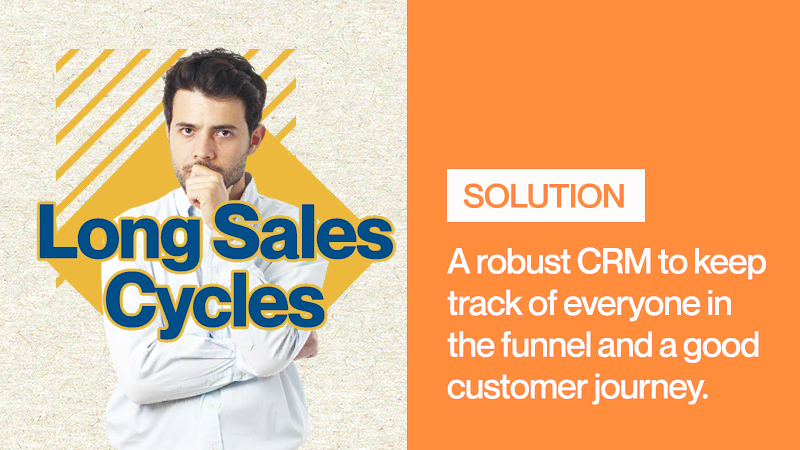
Industries such as B2B healthcare and education are notorious for longer sales cycles, and they’re not the only ones. This can be challenging because it’s easy to lose leads along the way, and there’s a higher risk of forgetting to follow up on the few that are already warm.
Marketers need to realize that for B2B companies with longer sales cycles, the buying process often starts months before the budget is ready. Prospects that directly approach companies have already begun their research process weeks or even months ahead.
They need to capture these leads for awareness and information campaigns earlier on. The more you educate a prospect earlier on, the higher their propensity to buy the solution from you.
Once they get caught in the funnel, it’s now a matter of keeping them engaged. This should be done using a combination of two things, a robust CRM to keep track of everyone in the funnel and a good customer journey.
There are a lot of good CRMs out there, but we highly recommend HubSpot. It allows you to assign lead owners, they have good automation software built into place, and it’s pretty much the most versatile platform out there.
As per the latter, we’ll talk about this in more detail in the next section.
Related: Turning Targets to Sales-Ready Leads with a 50% Shorter Lead Nurturing Cycle
Crafting a Creative Buyer’s Journey
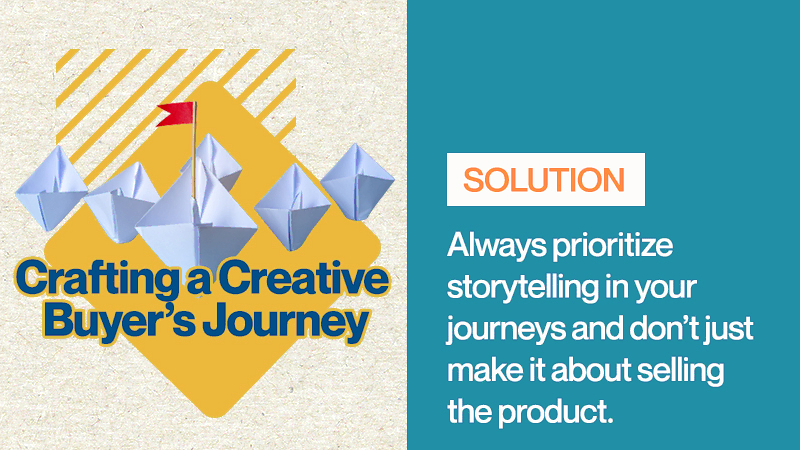
Longer buying cycles also mean a more extended buyer’s journey, and this is where your lead nurturing will matter the most.
Instead of using traditional email campaigns that follow up every three days or so, industry-specific SaaS companies have to develop more crafty ways to keep engagement.
Content such as weekly or bi-weekly newsletters, engaging with prospects on other networks such as LinkedIn, and inviting them to webinars or events will all come in handy to create a buyer journey that effectively guides prospects from the awareness to the consideration stage.
This is where your CRM comes in handy so that you can track leads as they pass through the pipeline and score them accordingly.
Always prioritize storytelling in your journeys and don’t just make it about selling the product; aim to raise brand awareness, talk about company culture and show your prospects that it’s not about just a product but building a long-term relationship with them.
Remember lead nurturing doesn’t have to be purely about sending emails directly to the customers, you can simply keep posting on your LinkedIn or you can even try advanced options such as retargeting.
Related: Customer Journey: How To Guide Your Leads To Purchase
Complex Products
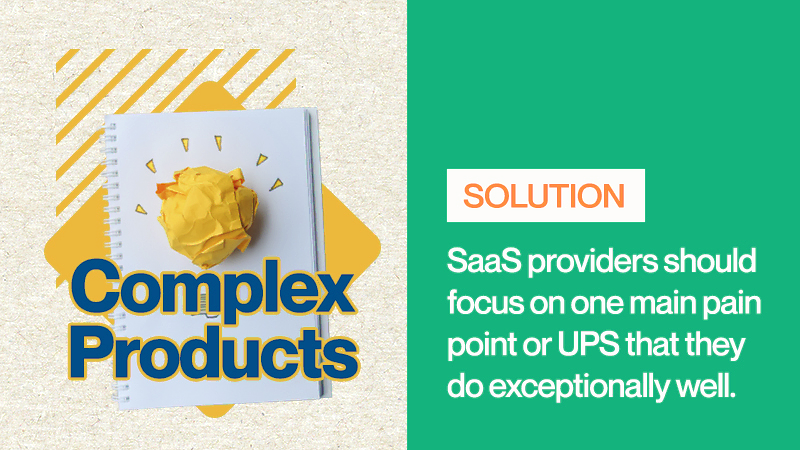
More often than not, industry-specific SaaS providers offer complex products with multiple features that attempt to solve different pain points that their ICPs have in one go. Although it’s excellent from a product development perspective, it can often lead to confusion from the prospects’ side.
Many B2B marketing campaigns attempt to list down all the ways their product is better than the competition, which leads to convoluted and often “wordy” campaigns that confuse prospects even more.
The way to fix it is simple, SaaS providers should focus on one main pain point or UPS that they do exceptionally well and let the entire process lead on from there.
Some marketers will argue that this might not be effective because a prospect won’t know about all the services that a provider gives, but here’s why it works.
The first “hook” should be about what a company does best, while the succeeding materials attempt to explain everything else they provide. The goal here is not to interact with the prospect once but to create a pipeline with various touchpoints that “teach” the chance about everything a company does.
This, in a sense, is part of your storytelling process; you want to create those touchpoints instead of overloading your prospects with “brochure-type” ads that they’ll only see once.
Start with the simple parts of your process first, and then move towards the more complicated features. Your prospects will appreciate it and it will help create a more robust buyer’s journey.
Complex Buyer Personas
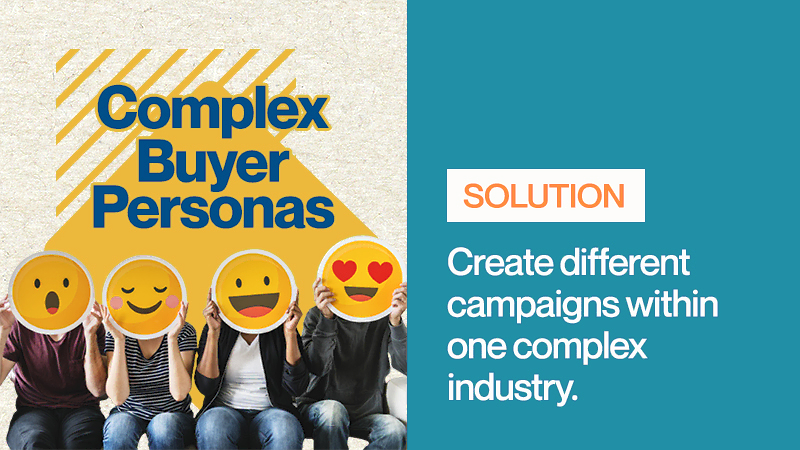
Some highly niched-out industries don’t follow the traditional buying structure with only one or two decision-making units (DMUs). In some sectors, technical teams get involved, and it can start becoming a mess when creating buyer personas.
The way to handle it is to create different campaigns within one complex industry. For example, you have the campaign to raise awareness and drive information to technical teams, while the purchasing team gets a separate campaign.
These campaigns can then come together to nudge the entire organization to a sale gently.
Be warned, and it can get complicated quickly, so the way to manage is to make sure you log everything down correctly.
Related: ABM Telemarketing Scripts for Cold Calling Key Software Personas
Brand Values

Communicating brand values might be difficult for industry-specific SaaS providers because resources are better spent on direct materials, but that shouldn’t be the case. Sharing brand values is an essential step in building a relationship with prospects because it creates trust.
The way to do it is to integrate the marketing values within the buyer journey; instead of telling prospects that you’re offering them a discount, you could tell them about your corporate culture.
It also creates a break between marketing materials, and that’s always great, so SaaS companies don’t come off as pushy.
Marketers shouldn’t be scared of the waste as these materials still provide brand awareness and still contribute to the consideration stage for the prospect.
Brand value materials can be anything from quotes, shared articles about CSR campaigns, or even pictures of the team working together to create products for the industry.
Selling industry-specific SaaS solutions do come with many challenges, but they are by no means impossible to get through. You can still commit to massively growing your lead generation campaign using the right frameworks and strategies.
Are you an industry-specific SaaS solutions provider that needs access to a lead generation service that actually works? Contact Callbox today and find out how we can help you with your growth!
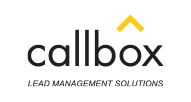

![Callbox Bridge to Global Market for Improved Code Review Tool [CASE STUDY]](https://www.callboxinc.com.au/wp-content/uploads/2019/02/CS_SW_Callbox-Bridge-to-Global-Market-for-Improved-Code-Review-Tool-180x180.jpg)
![Australia's Leading Technology Broker Captures more Leads with Callbox [CASE STUDY]](https://www.callboxinc.com.au/wp-content/uploads/2019/02/CS_IT_Australias-Leading-Technology-Broker-Captures-More-Leads-with-Callbox-180x180.jpg)
